Hajj, the fifth pillar of Islam, holds profound significance as an obligatory duty for every Muslim who is financially and physically capable of undertaking it. Each year, millions of Muslims from around the world gather in Makkah between the 8th and 12th of Dhul Hijjah to fulfill this sacred obligation to Allah (SWT).
The pilgrimage involves physically demanding rituals that require perseverance and commitment, allowing pilgrims to seek forgiveness from Allah. Participating in Hajj fosters a deep sense of trust and love for the Creator, Allah (SWT), and His Messenger (pbuh). It serves as a powerful reminder of a believer’s responsibilities toward Allah and emphasizes the importance of relying on His divine plan with a devoted heart, mind, and soul.
The historical roots of Hajj trace back to the time of Prophet Ibrahim (AS), when Allah commanded him to leave his wife, Hajira (RA), and son, Ismail (AS), in the arid desert of Makkah. In a desperate search for water for her son, Hajira (RA) ran between the mountains of Safa and Marwa but found nothing. Upon returning to Ismail, she discovered her baby scratching the ground, from which a miraculous water fountain sprang forth. Later, Allah (SWT) commanded Prophet Ibrahim (AS) to build the Kaabah in this very location and to invite people to the pilgrimage.
The Prophet Muhammad (pbuh) himself performed Hajj with his companions in 630 CE, traveling from Medina to Mecca for this significant annual pilgrimage, setting an enduring example for all Muslims.
The Kaaba, or Baitullah (House of Allah), is the focal point of the Islamic world, constructed centuries ago by Prophet Ibrahim (AS) and his son, Prophet Ismail (AS). It is the first house of worship dedicated to Allah and has undergone numerous renovations due to natural disasters and changes over time, with a notable renovation occurring during Prophet Muhammad’s (pbuh) lifetime.
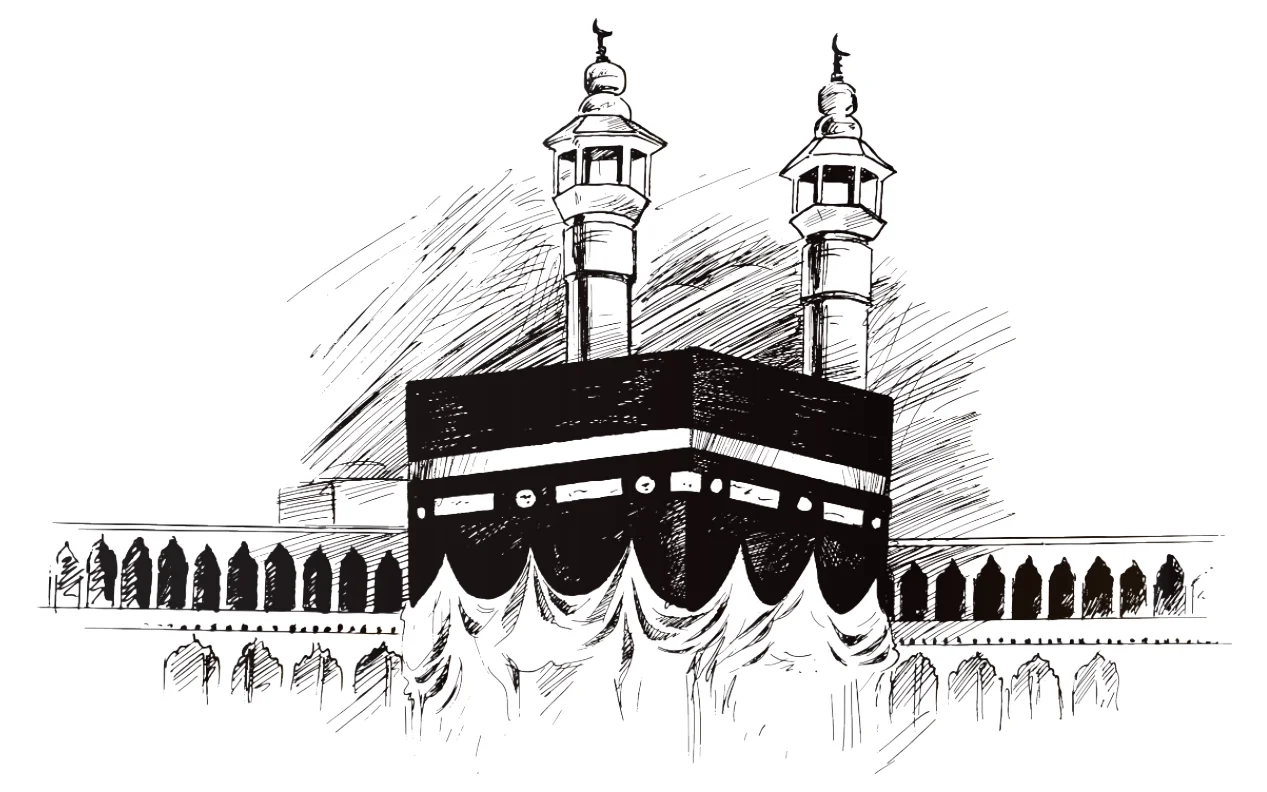
The pilgrimage involves physically demanding rituals that require perseverance and commitment, allowing pilgrims to seek forgiveness from Allah. Participating in Hajj fosters a deep sense of trust and love for the Creator, Allah (SWT), and His Messenger (pbuh). It serves as a powerful reminder of a believer’s responsibilities toward Allah and emphasizes the importance of relying on His divine plan with a devoted heart, mind, and soul.
The historical roots of Hajj trace back to the time of Prophet Ibrahim (AS), when Allah commanded him to leave his wife, Hajira (RA), and son, Ismail (AS), in the arid desert of Makkah. In a desperate search for water for her son, Hajira (RA) ran between the mountains of Safa and Marwa but found nothing. Upon returning to Ismail, she discovered her baby scratching the ground, from which a miraculous water fountain sprang forth. Later, Allah (SWT) commanded Prophet Ibrahim (AS) to build the Kaabah in this very location and to invite people to the pilgrimage.
The Prophet Muhammad (pbuh) himself performed Hajj with his companions in 630 CE, traveling from Medina to Mecca for this significant annual pilgrimage, setting an enduring example for all Muslims.
Meeqats are designated stations for Ihram, established by Prophet Muhammad (pbuh) around Makkah. These locations serve as starting points for pilgrims intending to perform Hajj or Umrah. The five primary Meeqats are:
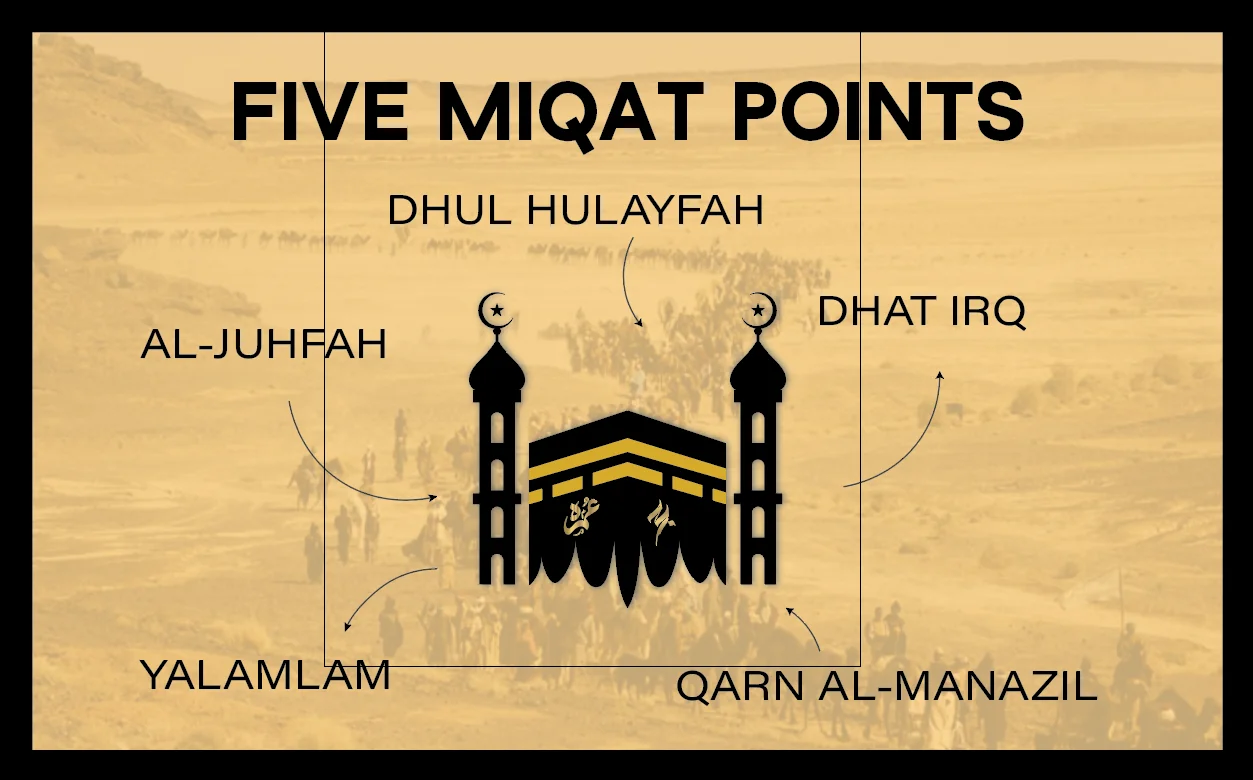
For Muslims traveling from the UK, the nearest Meeqat is Rabegh. Pilgrims flying from the UK must enter Ihram before reaching the Meeqat, but they should only express their intention (Niyyah) and recite the “Talbiyah” upon arriving at the Meeqat, as announced by Saudi Airlines. For other airlines, the Meeqat zone is typically reached approximately one hour before arrival at Jeddah Airport.
Important Note: It is essential for pilgrims to don Ihram before passing through these designated Meeqats, regardless of their mode of transport (road, air, or sea).
Ihram signifies the declaration of certain lawful actions as haram (unlawful) for the duration of the pilgrimage. After making the intention (niyyah) and reciting the Talbiyah, certain permissible activities become prohibited, including wearing stitched garments, using perfume, and cutting hair. The combination of niyyah and Talbiyah is known as Ihram.
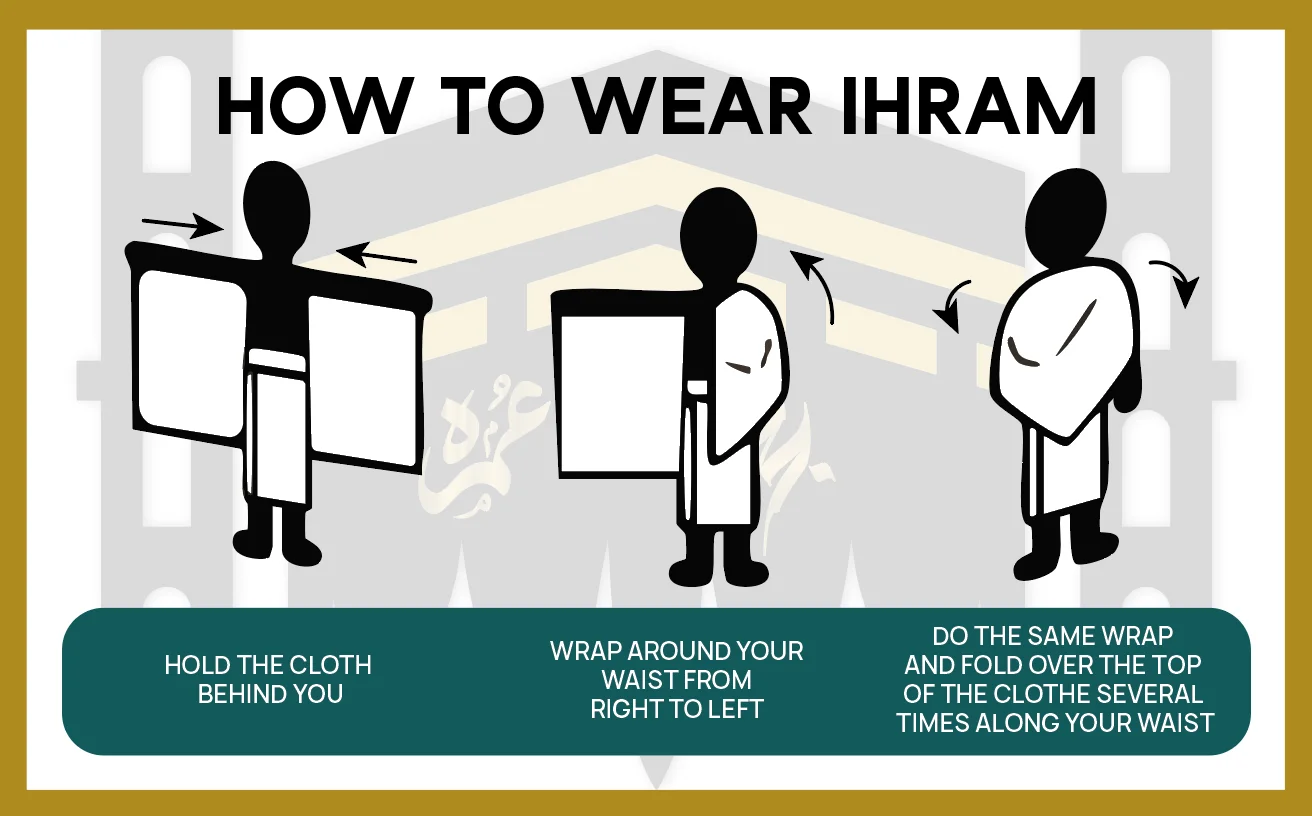
Typically, men wear two white, unstitched sheets when entering the state of Ihram. The essence of Ihram lies in the intention and Talbiyah, rather than the clothing itself. Women, on the other hand, can wear their regular clothing, provided it meets the Islamic guidelines for modesty. While women do not wear the same Ihram attire as men, they are required to perform all Hajj rituals in the same manner.
When to Assume IhramPilgrims must assume Ihram from the designated Meeqat, which for those traveling from the UK is Rabegh.
Common MisconceptionsIt is a common misconception that once the Ihram garments are donned, they cannot be removed. Changing or removing the Ihram clothing does not nullify Ihram. A pilgrim remains in the state of Ihram until all essential rites of Hajj are completed and they either shave their head or cut their hair.
Ihram signifies the declaration of certain lawful actions as haram (unlawful) for the duration of the pilgrimage. After making the intention (niyyah) and reciting the Talbiyah, certain permissible activities become prohibited, including wearing stitched garments, using perfume, and cutting hair. The combination of niyyah and Talbiyah is known as Ihram.
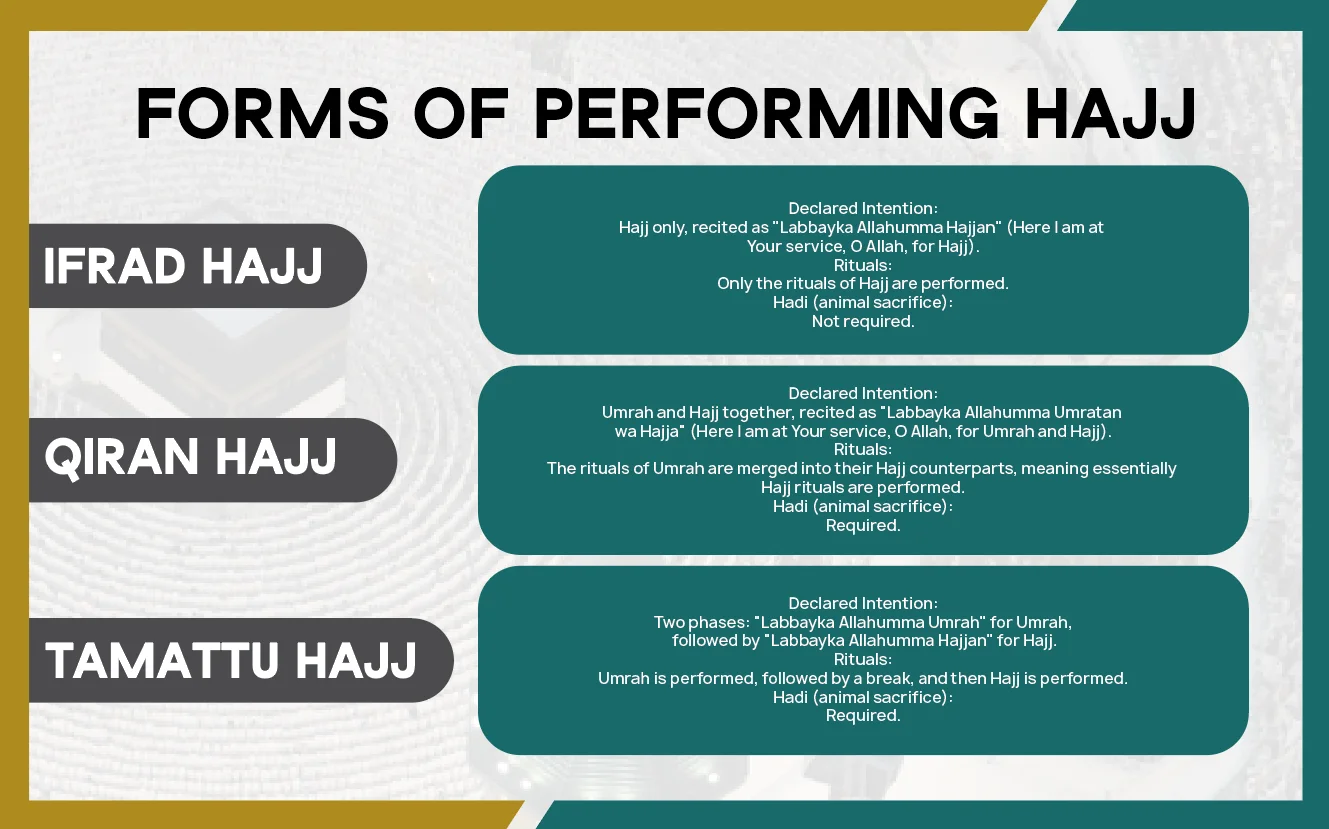
It is the simplest form of Hajj. A pilgrim enters into the state of Ihram with the intention of performing Hajj only before passing through the Meeqat (place for assuming ihram). The pilgrim does not combine Hajj with Umrah and makes sure not to perform umrah in the months of Hajj. The person performing Hajj-ul-Ifrad is called Mufrid.
During this kind of Hajj, a pilgrim who performs Hajj-ul-Qiran combines Hajj and Umrah. He assumes Ihram with the intention to accomplish both. The pilgrim who performs this kind of Hajj is called a Qarin.
Qarin wears Ihram first for Umrah and then for Hajj making his intentions for Hajj just before performing Tawaf for Hajj. The obligations on one performing Hajj-ul-Qiran are the same as the one performing Ifrad, except that the former must slaughter whereas the latter is not obligated to do so.

Ihram signifies the declaration of certain lawful actions as haram (unlawful) for the duration of the pilgrimage. After making the intention (niyyah) and reciting the Talbiyah, certain permissible activities become prohibited, including wearing stitched garments, using perfume, and cutting hair. The combination of niyyah and Talbiyah is known as Ihram.
Assume Ihram and intend to perform Hajj at the designated Meeqat (Rabegh for UK pilgrims). Those flying must enter Ihram before reaching it.
Stop at Arafat from Zawal on the 9th of Dhul Hijjah until dawn on the 10th. This is essential; omitting it invalidates the Hajj.
Perform this Tawaf from the 10th to dawn of the 12th Dhul Hijjah after shaving or cutting hair. It must be completed before returning to Mina for stoning. Delays require an animal sacrifice (Dam).
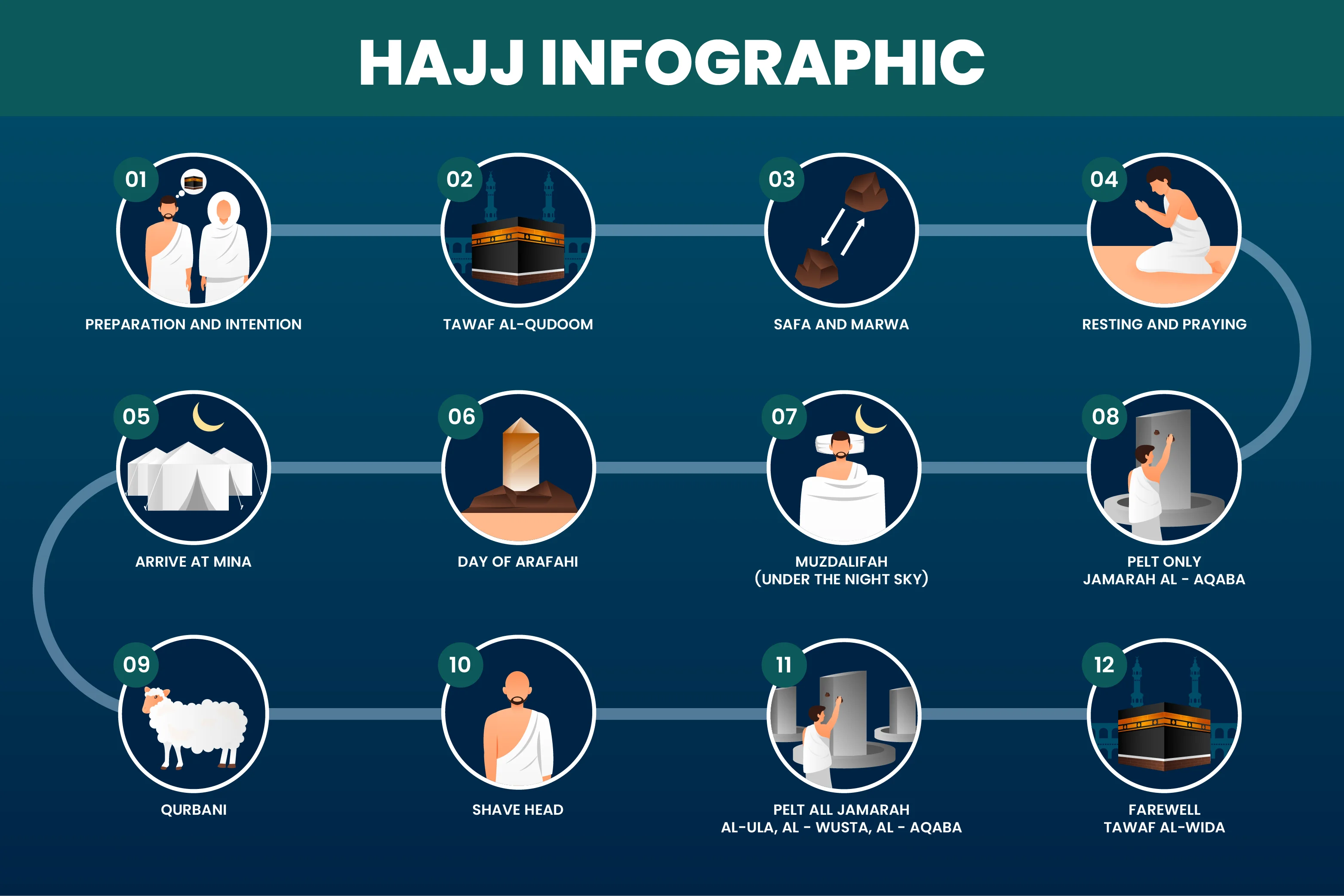
Tawaf is the act of circumambulating around the Kaaba (Baitullah) seven times. It is a crucial ritual in both Hajj and Umrah.

Performed upon entering Masjid-ul-Haram in Ihram by those doing Hajj al-Qiran or Hajj al-Ifrad.
Done between the dawn of 10th Dhul Hijjah and sunset of 12th Dhul Hijjah, after leaving Ihram and before returning to Mina. Delaying this Tawaf requires a Dam (sacrifice).
The final Tawaf performed at the end of Hajj.
Mandatory for Umrah.
Required when someone has made a vow to Allah.
Recommended upon entering Masjid-ul-Haram; it can substitute for any other Tawaf.
Optional Tawaf that can be performed anytime. It requires the intention (niyyah) for nafl.
There are no specific duas for Hajj rituals; individuals are encouraged to recite any dua they remember or wish to make. However, it is important to perform the rituals of Hajj and Umrah as closely as possible to how the Prophet (pbuh) performed them. Here are some recommended basic Hajj duas and supplications for your journey:
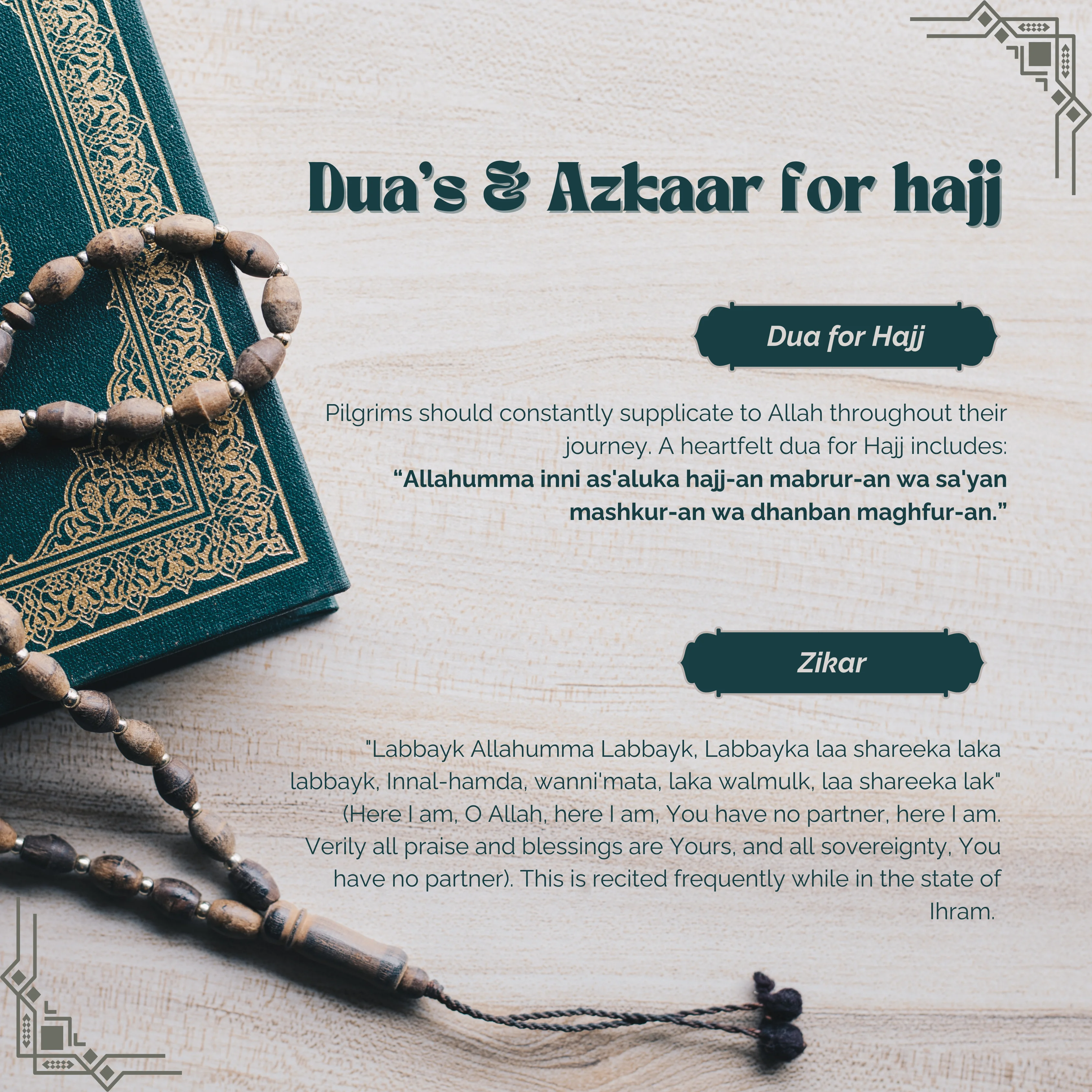
The intention is crucial in Hajj, as the reward depends on it. You can change your intention about the type of Hajj before assuming Ihram. However, if you wish to change it afterward, you may switch from Tamattu to Qiran, but not from Tamattu to Ifrad.
Some mistakenly believe that changing the Ihram clothes will invalidate their state of Ihram. In reality, you are allowed to change your Ihram as needed. You remain in Ihram until you complete all essential rites of Hajj and shave or clip your hair.
Many people try to touch or wipe parts of the Kaaba or Maqam-e-Ibrahim, thinking it brings blessings. This practice is a common misconception with no basis in Hadith or Sunnah. The Prophet (pbuh) only touched the Black Stone and the Yemeni corner. Innovations in religious practice during Hajj should be avoided.
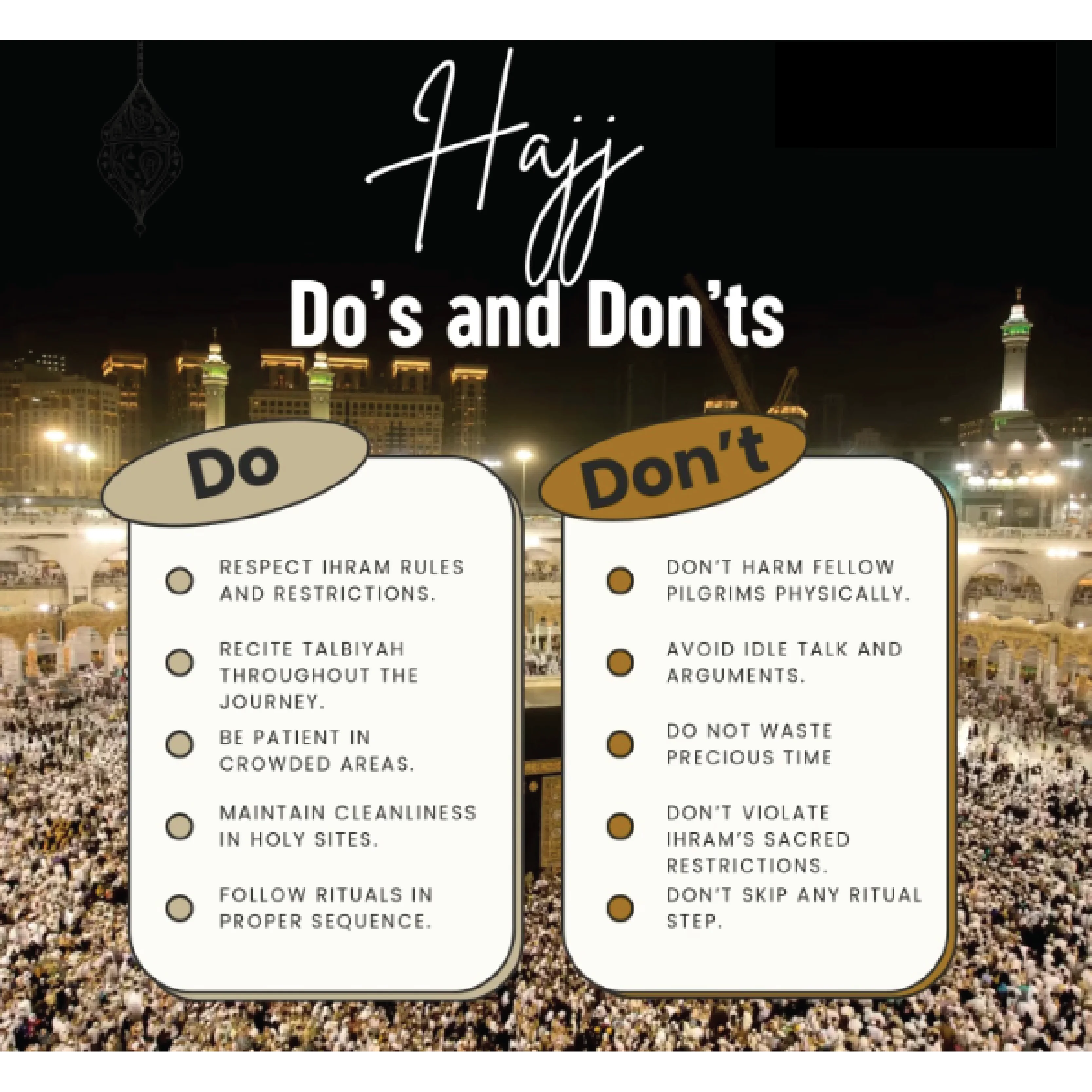
Here are essential tips for a successful and healthy Hajj pilgrimage:

